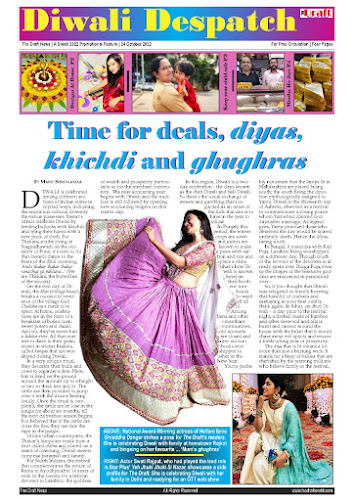Xmas Vibes | A Lost Tradition in the Age of Social Media
By Gajanan Khergamker
There was a time when carolers—flocked together in joyful harmony—would fill the streets of South Mumbai particularly Colaba and Dhobi Talao, with their sweet voices and the soft glow of flickering candles. It was a scene that evoked the true spirit of Christmas: simplicity, togetherness, and reverence.
Groups of friends, families, and even strangers from across religions would gather at the entrances of lanes, in front of homes, or near the gateway to the city’s iconic landmarks, sharing not just a song, but an experience steeped in tradition. They sang not for applause or attention but for the joy of the season, wrapped in warmth that transcended the cold December nights.
 |
| There was a time when carolers would fill the streets of South Mumbai |
Now, the once serene streets are replaced by another kind of spectacle—one dominated by high-decibel performances, bright lights, and flashing cameras. Carol singing has morphed into a public event, a commercial spectacle, amplified by microphones and captured on smartphones. The true essence of caroling—the intimate gathering, the shared song under the starry sky—seems almost lost in the noise of social media, where 'likes' and 'hits' now count more than genuine connection.
What once began as a heartfelt expression of joy now feels like a staged performance, orchestrated for Instagram stories and Facebook reels. No longer do we hear the raw, spontaneous renditions of Silent Night or O Come, All Ye Faithful sung in unison. Instead, carolers now pose, holding their phones as much as their candles, performing for the lens rather than for the shared experience of the season. Where there were once quiet, joyous gatherings, there are now commercialised fun fairs and plush venues, filled with audiences eager for the next viral video.
This shift, while reflecting the changing tides of technology and culture, has not come without its critics. The nostalgia for the 'old days' persists, especially among those who recall the simpler, quieter caroling nights.
In their memories, caroling was not just a form of entertainment; it was an act of communal spirit, an annual ritual that bound people together regardless of class, creed, or background. It was a time when people connected face-to-face, when caroling was as much about the shared act of singing as it was about the warmth of offering a cup of tea or a plate of sweets to the singers.
This deep sense of loss is akin to the longing expressed in the familiar refrain: Bring back my Bonnie to me. For many, the ‘Bonnie’ in this case isn’t a person but a time—a simpler era when Christmas caroling was about genuine participation rather than commercial exploitation. The true charm of those caroling nights was in their informality, the unpolished beauty of community coming together. But today, as companies capitalise on every occasion, the focus has shifted from heartfelt traditions to content creation.
It’s easy to point fingers at social media and its insatiable need for validation. Platforms like Instagram and Facebook, which once served as a means of connecting people, have now fostered a culture of performativity. Carolers, no longer content with merely singing for the joy of it, are encouraged to capture every moment on camera, creating a version of reality that often lacks the warmth and authenticity of the past. The Christmas spirit, which once flourished through personal, in-the-moment experiences, is now being commodified—packaged neatly for public consumption.
 |
| Caroling was not just a form of entertainment; it was an act of communal spirit |
Yet, despite this overwhelming shift, there is hope. Small pockets of resistance exist where people still carry the torch of the old caroling tradition. Some churches continue to host intimate carol nights, where neighbours and friends gather to sing in small groups, not for fame or fortune, but for the joy of the season. In the quiet corners of Colaba, Dhobi Talao and other old zones, some nostalgic voices still yearn for the return of those unpolished carol nights, when voices rose in the night air, untainted by the noise of cameras or crowds.
Perhaps the answer lies not in rejecting technology but in rediscovering the essence of what made those nights magical. What if we could bring back the intimacy of caroling without forsaking the reach of social media? Maybe, just maybe, we could find a balance between the nostalgia for the old and the potential of the new. But one thing remains certain: as long as there are people who remember the magic of the past, the song of the caroler will never truly be lost.
So, as we sing Joy to the World and O Holy Night, let us remember that the real magic lies not in the likes, but in the shared smiles and the unspoken bond between the singer and the listener. Bring back my carolers to me—not as performers, but as participants in the true spirit of Christmas.




Post Comment